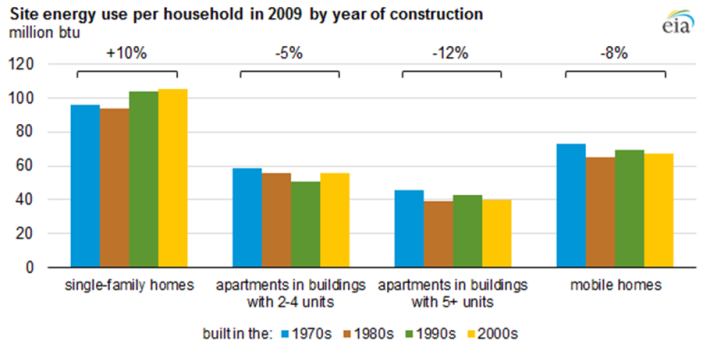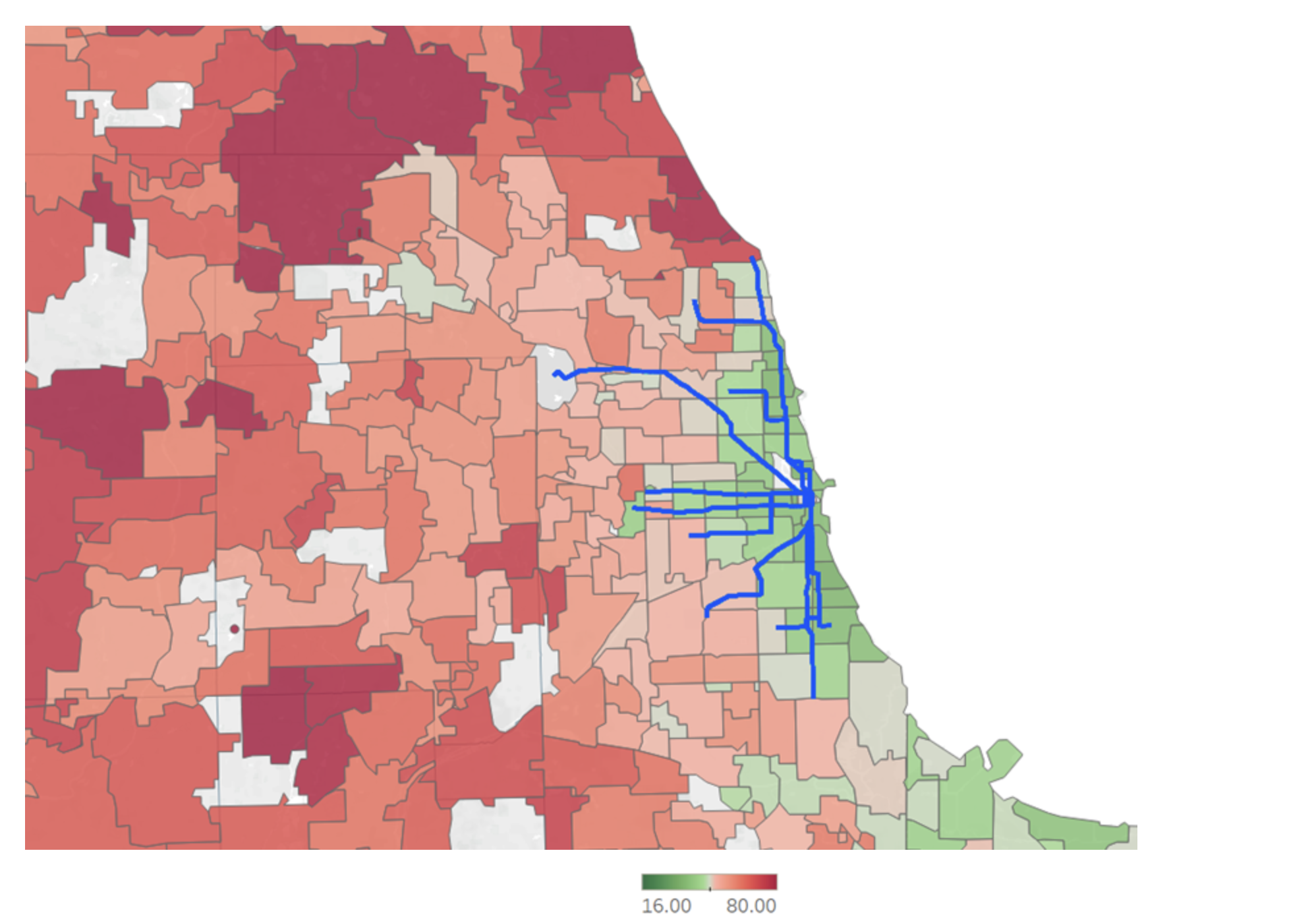Streetsblog has chronicled the role that our zoning and land use rules play in transit ridership, economic growth, and segregation. But the map above makes another point – Chicago’s land use policies have a major impact on our greenhouse gas emissions. Chicagoans living in dense, walkable neighborhoods contribute far less to climate change than residents in car-dependent suburbs (and not just because suburbanites drive more.) Building a welcoming, transit-rich city is one of the most important things we can do to fight climate change.
Where did this map come from?
The map was created by researchers at the University of California Berkeley, who modeled the impact of geography on greenhouse gas emissions across the United States. They first estimated household demand for items like energy, transportation, food and water by zip code, and then translated that into expected greenhouse gas emissions. Unsurprisingly, the rich consume more: They estimated higher per-household emissions in wealthier zip codes with larger homes and more car ownership. But even though the wealthy tend to contribute more to carbon emissions, density manages to reverse this pattern. Households in high-income but dense neighborhoods in the city have much lower emissions than their peers in the suburbs.
Denser development reduces emissions for two reasons. First, Chicagoans are much less car dependent than residents of the suburbs. Residents of dense, walkable neighborhoods are less likely to own cars, and instead walk, bike, or ride public transportation. And when they do drive, it’s for shorter distances. It shouldn’t come as a surprise to Streetsblog readers that the northernmost low-emissions zip code on the map is Evanston, which boasts a dense downtown and is well-served by the Purple Line. All told, the researchers estimate Chicagoans drive an average of half as many miles per year as households in the suburban collar counties.
But it’s not just the cars we drive. Chicago’s two-flats and apartments are much more climate friendly than suburban homes. With shared walls and floors, apartments help insulate each other, reducing the amount of energy required for heating and cooling. Single-family homes are often larger, and (by definition) exposed to the elements on four sides. The US Energy Information Administration estimates that larger apartment buildings are, on average, twice as energy efficient as single-family homes.

Housing Policy is Climate Policy
If we don’t make room for more people within the city of Chicago, they won’t disappear. Instead, housing costs will rise, and some folks will move out – often to a place where they’re more likely to drive and live in a single-family home. According to a study by researchers at the University of Illinois at Chicago, more than half of Black and white residents leaving Cook County between 2005 and 2016 relocated to the suburban collar counties, or to neighboring Indiana and Wisconsin. And that has a huge climate cost. According to the Berkeley estimates, every household that moves from Chicago’s lakefront to a suburban collar county consumes an extra 25 metric tons of carbon dioxide per year—equivalent to burning 2,800 gallons of gas, according to the EPA.
But when it comes to housing, we’re not talking about individual families. These choices affect tens of thousands of households a year. In recent years, Chicago’s population has been roughly flat. If instead we grew by just 1 percent per year, pulling residents from the suburbs to the high-demand lakefront zip codes that are already growing on both the North and South sides, we’d reduce CO2 emissions by 290,000 metric tons per year. That’s the equivalent of taking roughly 62,000 cars off the road (note that more emissions would occur inside Chicago, but we’d emit less overall). Put another way, this bit of housing policy would accomplish a fifth of the greenhouse gas reductions targeted by the city’s new Climate Action Plan.
It’s important to note some limitations to this data. The time periods analyzed above are all slightly different, and the greenhouse gas emission estimates predate the COVID-19 pandemic. But there’s also reasons to imagine they could be an undercount. The estimates above just reflect the average housing stock of zip codes in those lakefront neighborhoods. A zoning code that encouraged more parking-light apartments and two-flats could achieve even greater reductions. And the Berkeley researchers didn't account for local energy policies in their estimates. That matters for the climate footprint of Chicagoans who do leave for states further away—and swap climate-friendly Illinois for states like Texas that are working overtime to promote fossil fuel consumption.
We Have Work to Do
Chicago’s recent Climate Action Plan gets at some of these policies. It endorses efforts to strengthen public transit and equitable transit-oriented development (TOD). But there’s more to be done. On the North Side, the city needs to roll-back zoning rules that ban three-flats and apartments. On the South Side, we should integrate Metra Electric and CTA service (increasing frequency and using Ventra cards), and expand investment in equitable transit-oriented developments like 43 Green. And more broadly, we should recognize that policies that encourage denser development and more residents, like allowing accessory dwelling units to be built city-wide, are climate smart.
As the 2023 election season ramps up, candidates are already being asked where they stand on housing, transportation, and climate change. A good rule of thumb: If a candidate doesn’t care about denser housing and better public transportation, they don’t care about saving the climate either.





